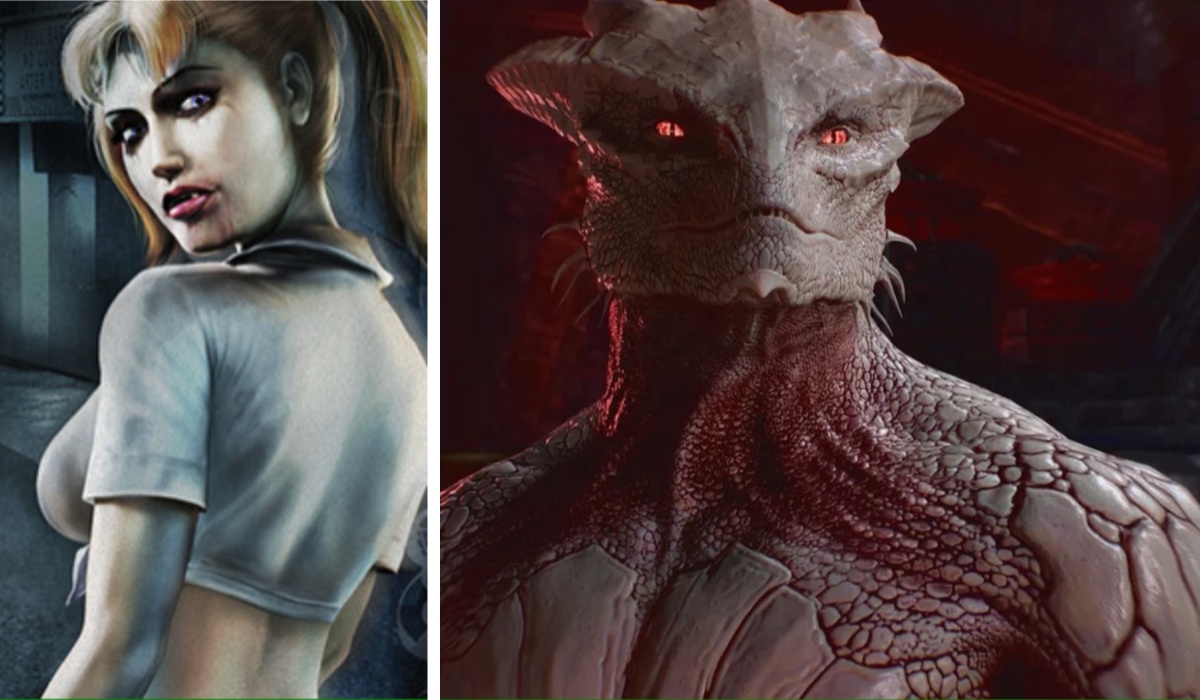What ‘Baldur’s Gate 3,’s ‘Dark Urge,’ and ‘Vampire: The Masquerade – Bloodlines’ Have in Common

Alongside the companion origins in Baldur’s Gate 3, you also have an option to create a character called “The Dark Urge”: a fully-customizable character who cannot remember who they are, yet struggles with an almost inescapable bloodlust wherever they go.
Many players are advising against making this your first playthrough, which I more or less agree with. Unlike the standard character origin, playing as the “Durge” will constantly force you to choose whether you fight your sadistic urges or cave in to them. One such example includes meeting Gale, the Wizard: Normally, the worst thing you do to him is slap his hand as it pokes out of his portal. When you play as the Durge, you can straight up rip his arm off, killing him in the process.
While you do have the potential to curb these dark impulses, it’s very difficult, and there are some grisly events you simply cannot avoid. Bearing this in mind, I was reminded of another popular RPG that I also love quite dearly: Vampire: The Masquerade – Bloodlines.
BG3 and VTMB both take player choice very seriously—both based on tabletop roleplaying games, Dungeons and Dragons and Vampire: The Masquerade respectively—and this extends to how they’ve shaped the way your character interacts with the world around them. As such, picking a “clan” in VTMB is incredibly important regarding how you want to roll your character. I’m partial to the Gangrel clan because I, too, am a misanthropic bitch who loves animals.
However, there are two clans that players recommend you save for another playthrough: the Nosferatu and the Malkavian.
Nosferatus are vampires who take after their namesake, looking less like a seductive midnight snack and more like a creature straight outta hell. When you play as a Nos, you can’t walk around Los Angeles normally. You have to traverse the sewers, or else you’ll set the town into a panicked frenzy, lose favor within vampiric society, and get the cops after you. Navigating the sewers is doable, sure, but it definitely makes the game a little more frustrating when all you’re trying to do is go to the convenience store without freaking out the neighborhood.
Where Nosferatus lose a bit of their edge, however, is in how “normal” their dialogue options largely are. Malkavians are a whole other beast entirely. While playing as a Malkavian, you will constantly hear voices, no matter where you go. In particular, the line “Cemetery runoff congealing at the door” always gives me the creepy-crawlies. As well as this, you’ll be able to interact with inanimate objects, such as stop-signs, as well as the television. Yes, the television will talk to you. You can have a full “conversation” with the TV broadcaster.
But the most notable thing about playing as a Malkavian is how they talk. Malks speak in riddles in part because they have an innate prophetic power within them. We, as players, might not get the full context of what they’re saying. It’s debatable whether or not even Malks themselves understand, but they’re out there saying it, either way.
It’s a compliment!
VTMB is one of those games that, despite how janky and dated it is, still holds up tremendously well, simply because it’s a damn good RPG. You really feel like you’re a scummy, nasty vampire in the dregs of slutty late-night L.A., and the game is only elevated through the phenomenally interesting choices they allow you to make as a player—such as choosing to play as characters as radically different as a Nosferatu and Malkavian.
So, when I say that BG3 and the Durge remind me of these things, trust when I say that’s a good thing. Play both games! Compare and contrast. Go wild with your nastiest selves.
(featured image: Larian Studios/Troika Games)
Have a tip we should know? tips@themarysue.com